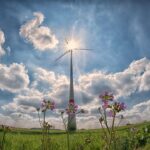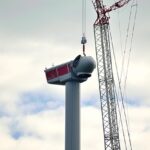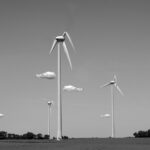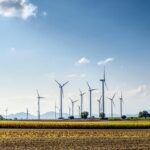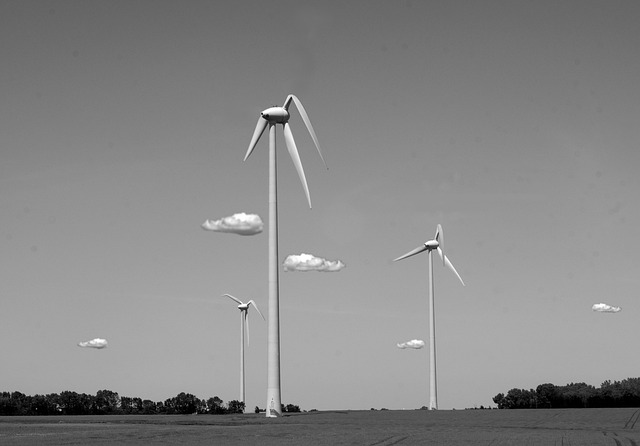Harnessing the Breeze: The Future of Wind Power
In recent years, the significance of renewable energy sources has risen dramatically due to the urgent need to combat climate change, enhance energy security, and stimulate economic growth. Among these, wind power stands out as one of the most promising and rapidly growing forms of renewable energy. With advancements in technology and a growing awareness of environmental sustainability, wind power is set to play a pivotal role in the global energy landscape of the future.
The Basics of Wind Power
Wind power is generated by converting the kinetic energy of wind into mechanical energy, which can then be transformed into electricity. This is primarily achieved using wind turbines, which capture wind energy and convert it through a series of mechanical processes. Major components of a wind turbine include:
- Blades: These large, aerodynamic structures harness wind energy. Modern turbines typically have three blades, which optimize efficiency and reduce noise.
- Nacelle: Located atop the turbine tower, the nacelle houses the generator and other critical components required for electricity production.
- Tower: The structure that supports the nacelle and blades, elevating them to capitalize on higher wind speeds at greater altitudes.
- Generator: This component converts the mechanical energy from the spinning blades into electrical energy through electromagnetic induction.
The Current State of Wind Power
As of 2023, wind power has seen exponential growth worldwide. According to the Global Wind Energy Council (GWEC), global wind capacity reached over 940 gigawatts (GW) by the end of 2022, marking a significant increase in the commitment to renewable energy. Major countries leading the charge include China, the United States, and Germany, which together account for a significant share of the installed wind capacity.
Wind power has several advantages over traditional fossil fuels:
- Environmental Benefits: Wind energy generation produces no greenhouse gas emissions during operation, significantly reducing the carbon footprint associated with energy production.
- Scalability: Wind farms can be constructed on both land and offshore, providing flexibility in deployment and adaptability to various geographic conditions.
- Job Creation: The wind energy sector promotes job growth in manufacturing, installation, operation, and maintenance, providing economic benefits to communities.
Technological Advancements
Technology is at the core of wind power’s expansion, leading to increased efficiency, cost-effectiveness, and energy output. Recent innovations in wind turbine design and operation include:
- Large Turbine Innovations: Modern wind turbines have considerably larger blades and higher towers, allowing them to capture more wind energy at greater heights where wind speeds are typically higher. Cutting-edge models can exceed 12 megawatts (MW), significantly enhancing energy production.
- Smart Grid Integration: Advanced software and data analytics improve the integration of wind power into existing energy grids. Smart technologies enable real-time monitoring, predictive maintenance, and optimized performance.
- Offshore Wind Farms: Offshore wind energy is gaining traction due to stronger and more consistent winds available at sea. Innovations in floating turbine technology have enhanced the feasibility of harnessing wind energy in deeper waters.
Challenges Facing Wind Power
Despite its many advantages, wind power does face significant challenges that must be addressed to achieve its full potential:
- Intermittency: Wind is inherently variable, which can lead to challenges in energy supply. Energy storage technologies, demand response systems, and diversified energy sources are critical to counteracting this issue.
- Land Use and Habitat Impact: The installation of wind farms can impact land use and local ecosystems. Careful planning and site selection are crucial to minimize these effects and coexist with wildlife.
- Public Acceptance: Siting wind projects can sometimes lead to community opposition, often due to concerns about noise, aesthetics, and potential health impacts. Engaging with communities and addressing their concerns is essential for successful project development.
The Role of Policy and Investment
The future of wind power is heavily influenced by government policies and investments. Many countries have set ambitious targets for renewable energy production, prompted by international agreements aimed at reducing carbon emissions. For instance, policies such as feed-in tariffs, tax credits, and renewable portfolio standards have bolstered the wind energy sector.
Investment trends also dictate growth in the wind energy market. Venture capital and institutional investors are increasingly channeling funds into wind projects, attracted by the prospect of long-term returns and environmental sustainability. Public-private partnerships are showcasing collaboration opportunities that enhance resource allocation and technological advancements.
Future Outlook of Wind Power
As we look ahead, the potential for wind power appears promising. Several trends and projections indicate that wind energy will continue to grow significantly in the coming years:
- Increased Global Capacity: Analysts predict that global onshore and offshore wind installations could exceed 2,000 GW by 2030, driven by technological innovations and enhanced efficiency.
- Hybrid Energy Systems: The integration of wind energy with other renewable sources, such as solar power, will optimize reliability and minimize the challenges associated with intermittency.
- Climate Goals Alignment: Renewed commitments to combat climate change will further accelerate the adoption of wind power as nations seek to meet carbon-neutral targets by mid-century.
Conclusion
Wind power stands at a pivotal moment in its evolution. With its numerous benefits, driven by technological enhancements and strong policy support, the future of wind energy is bright. Harnessing the breeze is not just about capturing wind; it symbolizes a profound shift toward a sustainable and environmentally responsible energy future. As we innovate, invest, and collaborate, the potential of wind power is boundless, promising to play an integral role in the transition towards a greener planet.
Embracing wind energy as a key player in our energy portfolio is essential for ensuring a sustainable, resilient, and economically viable future. As we navigate the complexities of energy transformation, wind power will undoubtedly be a cornerstone of global efforts to create a clean and sustainable world for generations to come.
